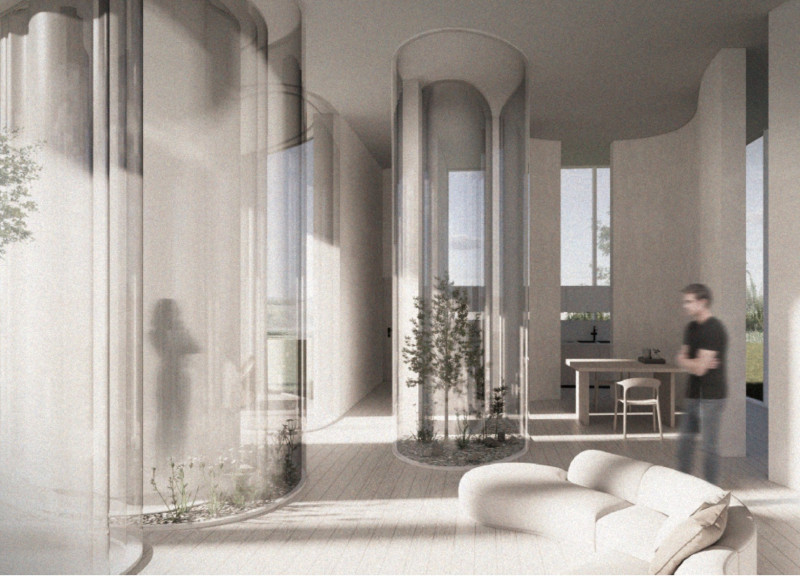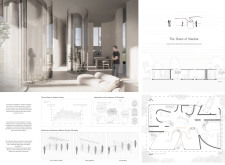5 key facts about this project
The design focuses on the complexities of personal relationships within a home. Set in a contemporary urban environment, it aims to improve the living experience for couples by promoting acceptance and adjustment to each other's needs. The concept of "Adjustment and Acceptance of Silhouettes" plays an important role here. It highlights how spaces can be arranged to allow for individual boundaries while still encouraging connection between partners.
Conceptual Framework
A layered approach organizes the space into three clear layers. The first layer establishes initial boundaries, defining personal spaces where individuals can retreat and reflect. The second layer uses distance effectively, creating opportunities for interaction while ensuring a sense of personal identity is preserved. The third layer introduces the idea of bending boundaries, which allows partners to engage with one another fluidly, adapting their interactions as needed.
Spatial Configuration
The layout includes specific areas designed for different levels of privacy and interaction. The entrance allows couples to arrive separately, promoting individuality as they move into shared spaces. Important areas like the kitchen, bedroom, and living room function as spaces of acceptance, where both partners can acknowledge each other’s presence. The design enables soft visual connections, allowing silhouettes of each partner to be seen from a distance without intruding on privacy.
Integration of Individuality
Individual hobbies and workspaces are thoughtfully integrated into the layout. This aspect supports personal interests while also accommodating shared experiences. The arrangement creates a balance where each person’s autonomy is respected within a collaborative living environment. By providing spaces that recognize both personal activities and partnership interactions, the design underscores the significance of maintaining distinct identities in a shared home.
With architectural elements focused on transparency and lightness, the silhouettes enhance both light and spatial perception. These design choices promote an atmosphere that encourages interaction without compromising personal boundaries. Ultimately, the work contributes to a living experience that values both connection and individuality, creating a thoughtful environment for couples.



















































